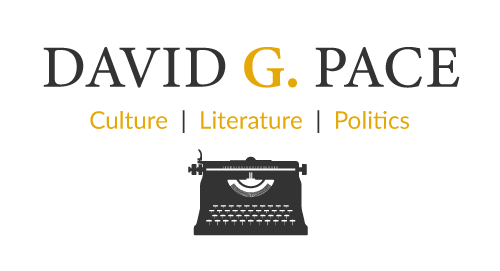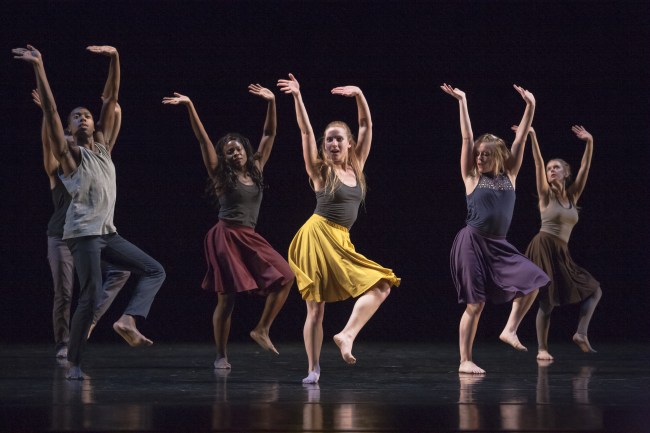“Dancing in our heads…
We dance for laughter, we dance for tears, we dance for madness, we dance for fears, we dance for hopes, we dance for screams, we are the dancers, we create the dreams.” ~Albert Einstein
One of the great pleasures for me while working at Repertory Dance Theatre was its studio. I was a desk jockey most of the day—writing grants and reports and always prospecting for new donors as Director of Development. But whenever I got bleary-eyed in front of the computer screen, or discouraged, wondering where we were going to get the required funding for our programs, I would remember the studio.
 In the RDT studio, just downstairs from my office at the Rose Wagner Performing Arts Center, I remembered that, as Albert Einstein once said, dancers are the athletes of the gods. By entering the dance zone of eight or nine or–with guest dancers from time to time, as many as thirty–it felt like entering a temple: a place of renewal, and awe; inspiration and wonder; tears and laughs.
In the RDT studio, just downstairs from my office at the Rose Wagner Performing Arts Center, I remembered that, as Albert Einstein once said, dancers are the athletes of the gods. By entering the dance zone of eight or nine or–with guest dancers from time to time, as many as thirty–it felt like entering a temple: a place of renewal, and awe; inspiration and wonder; tears and laughs.
In short, the studio/temple was real, kinetic and always hearty chicken soup for the soul.
After watching a rehearsal of a new commission or a reconstruction of either a contemporary or historical classic work of art, I found myself bounding back up the stairs ready to slay my quotidian dragons of fundraising for the arts.
I am not, nor will I ever be a dancer. At least not a temple dancer–that is, an “athlete of the gods” that we witness in professional concert dance. And yet, in the 9-plus years that I’ve advocated to government agencies, foundations, corporations and individuals . . . even at the Utah State Legislature . . . for funding to continue the work of America’s premier repertory dance company, I have truly become a disciple of the art form.
I remember sitting at a window seat of an airplane in 2003, descending into Salt Lake City from New York City where I had lived for seven years. I was returning to Utah, where I’m from, after 17 years of part-time work as a theater critic, first as a theater columnist and regional correspondent for Backstage in Salt Lake and then as a “stringer” for the Deseret News and other publications in the Big Apple. Upon my return to the Beehive State, I remember thinking that I wanted to experience more dance. Maybe it was that as a writer, dance, like music, appealed to my need for the purest art forms out there, something ephemeral, like theater—never to be recreated quite the same way once the moment had passed and the curtain dropped. But, unlike plays and musicals, I was also hungry for something that wasn’t language-based. I wanted something visceral, something whose main reason for being was the sheer joy and terror of moving through space. I wanted something very much like life as I experience life: fluid, unexpected, relentless and propulsive.
Dance was all of those things, and while I’ve been called an “arts nut” and a “culture vulture” by both friend and foe, modern dance soon became the lens through which I saw much of the world. And since a good part of the job of fundraiser, and for any salesperson for that matter, is to connect the subject to the vernacular and to show the relevance of it through those connections, that is what I attempted to do: make connections between the art form and everything outside that art form.
This is what I discovered. The world isn’t made up of discrete parts. There is no warring two cultures of science and arts like CP Snow argued so sixty-one years ago in what was, arguably, the first “culture wars.” Borders are only cartographic points on paper. Age is something that in our media-saturated era seems to move back and forth along a continuum. The language of art is the language of business, and academics and religion. It’s the same vocabulary that’s heard in the far-off chawing of the very gears of the earth through its circular, rotating dance through space.
The language of art is the language of business, and academics and religion.
Connecting modern dance to the rest of the world may seem like a tall order. Selling it to the public, to legislators, to Silicon Slopes and to your dad and your husband–to your video-gaming-addled son or daughter–is only a challenge if you haven’t found the right words, the right angle and if you still haven’t found the mojo that lives at the center of everything: including modern dance.
It’s not hard to get something out of its cubical, to unshackle it into the broader economy of ideas, and of entertainment, of industry—of culture. Not only is it easy, it’s inevitable. Why? Because life embodied as completely, as authentically, and as honestly as dance can’t be contained. We are all dancing through life, moving through sacred and profane spaces, threading our experience—both traumatic and joyous, serene and rapturous–through our minds and bodies. We are animated, even driven day-to-day more by muscle memory than we are by our arguments, our beliefs or even our values.
That’s the truth of it, even when I forget that truth while endlessly crunching numbers of public school students served by RDT’s school outreach; or trying to justify to the Legislature or corporate America the value of dance, of why they should send their charitable dollars our way; or having lunch with a potential major donor who over menus is looking at me like “who the heck are you?” but by the time the check comes might finally understand that the “ROI” isn’t always monetary, or even quantifiable.
Few of us in this high-desert, isolated place called Utah can claim to have worked for not one but both legendary professional contemporary dance companies whose legacies each extend beyond half a century. I am one of them. And I like to think that I was a convert to the art form, then an acolyte, and finally a champion of it as I realized and tried to help others understand and experience that dance is in each chromosome, each gene, each cell of that distinctly human enterprise we call life.
This shouldn’t surprise anyone, including the hardened skeptic who sees concert dance, whether it’s ballet, contemporary, folk, or competitive like what you see on TV’s “So You Think you Can Dance” or “Dancing with the Stars,” as some kind of boutique art form compartmentalized from everything that really matters: you know, like making money, accruing political power or relentless angling for social cachet in what the poet Wordsworth opined constituted “the world [that] is too much with us.”
 Dance theater invites us all to see the holistic side of life. It is not just an entertainment that like so many other things in the world comes and goes like the 24-hour (wait . . . more like the 24-minute) news cycle in this baffling and maddening era of Trumpism. It’s not so much a cultural artifact—this array of beautiful bodies moving beautifully–as it is an exquisite imprimatur of or license for wholly experiencing the world—and life.
Dance theater invites us all to see the holistic side of life. It is not just an entertainment that like so many other things in the world comes and goes like the 24-hour (wait . . . more like the 24-minute) news cycle in this baffling and maddening era of Trumpism. It’s not so much a cultural artifact—this array of beautiful bodies moving beautifully–as it is an exquisite imprimatur of or license for wholly experiencing the world—and life.
Still not convinced? Still think modern dance is just too weird? That you don’t “get it”?
Try this on for size. When you go to a symphony, or listen to a piano recital; when you sit for an hour and watch the mighty Colorado River rushing by; when you sit and watch your 3-year-old playing in the park alone or with other children . . . do you think to yourself. But . . . what does it mean? I don’t get it? What does the Beethoven mean? I don’t “get” this river? What is the meaning of my child’s play?
I suspect you don’t. Dance is an end in itself, just as life is. It is both the artifact and the artist, or as the poet Yeats said, in raises the question that swells unanswerably, “who can tell the dancer from the dance?”
So, this is the blessing from not so much a high priest in the temple of dance, but more from a lay minister who found a talent for connecting something impossible to pinpoint to the concrete world of business, education, family, politics and community. Someone who argues for the faith … a faith.
We dance through the world, all of us. It’s the first thing and the last thing we do: move, whether it’s kicking our way out of the womb or drawing one last breath. And professional art in general and dance in particular tells us not what we do in this world, or how buy … why. That “why” is a pretty powerful, and driving engine of creativity, of wonder, of the affirmation of life. And trying to answer that question, or just asking it in the first place, was a privilege for me. A privilege to be a part of it.
Do I miss modern dance now that I’ve left? Absolutely. But because of the nature of that particular temple I don’t feel as though I’ve ever really left. At the risk of sounding like a stick-in-the-mud Buddhist, everything is one, ever-imagining, convulsing, temperate and intemperate whole.
Everything is . . .
STEM (Science, Technology, Engineering, Math)
Art and Humanities.
Business.
Religion.
School.
Politics.
Community.
. . . Everything is dance.
“How can we tell the dancer from the dance?”
*
This post originally appeared on EMBARK, the official blog of Repertory Dance Theatre

